Dr. Marissa Giustina, senior research scientist and quantum electronics engineer in the Google AI Quantum team, kicked-off the MCQST Women in QST series. We sat down and talked with Marissa about her work and path towards research.
How does a computer actually work? - This question has accompanied Marissa Giustina since her childhood. Back then, her parents had left a discarded computer in her childhood bedroom. Although she could not yet use it, something about it fascinated her. "My father tried to explain to me what a computer does," says Marissa. "But I wasn't satisfied with that." Today, Dr. Marissa Giustina is much closer to the answer of this question. In Google's lab, she builds the hardware for quantum computers.
In an entertaining talk on September 13th 2019, as the first speaker in the Women in Quantum Science and Technology (QST) series held at the Max Planck Institute for Quantum Optics (MPQ), she talked about her work and her journey from the curious student to the research scientist and quantum electronics engineer in the Google AI Quantum lab. "With our new series Women in QST we want to contribute to making young, outstanding female researchers in this field more visible," said Dr. Tatjana Wilk, Managing Director of the Munich Center for Quantum Science and Technology (MCQST), in which the MPQ is also involved. "At the same time, this series of events is intended to bring together women from different career stages and offer them the opportunity to network".
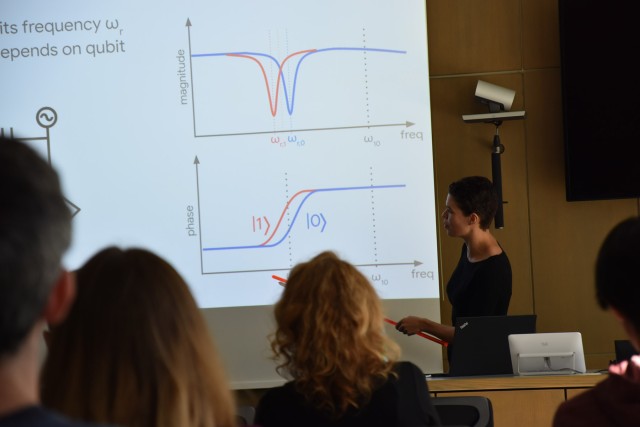 © Mirjam Krieger (MPQ)
© Mirjam Krieger (MPQ) During her school years Marissa Giustina experienced just how important the interaction with pivotal personalities is, besides curiosity and persistence. In her time as a junior student at Mary Baldwin College she was inspired by the only female physics lecturer there. The doors to engineering studies were finally opened for Marissa in 2006 when she was invited to a summer project in the laboratory of the Thayer School of Engineering at Dartmouth College.
Soon she decided to study engineering there. Marissa still thinks back gratefully to Prof. Lorenza Viola, from whom she learned quantum mechanics while studying engineering. "She was also the one who encouraged me to become a quantum engineer," Giustina says. "She is still my mentor, even though we see each other less and less often."
She was particularly influenced by a six-year research stay in the group of Prof. Anton Zeilinger in Vienna, where she also received her doctorate. Her experimental work on testing the Bell Theorem has received several awards. This venture into the foundations of quantum information theory drew Marissa even more deeply into the question, "How does a computer work?", and in 2016 she started developing actual quantum computers in Santa Barbara. in John Martinis' research group, which now is part of Google.
For a long time, quantum computers were a purely theoretical concept, but the first elementary quantum processors were developed in the laboratory around 20 years ago. The idea behind them: information should be able to be stored and processed using quantum states in a much more compressed form than is possible with conventional computers.
Quantum computers can be created in different ways, for example based on ion traps or nonlinear superconducting elements. The hardware quantum bits (qubits), which Marissa is building at Google, work according to the latter principle. They consist of an electrical oscillating circuit in which a so-called Josephson junction is integrated as a non-linear element. This changes the energy structure in the oscillating circuit in such a way that, in addition to the two discrete states representing the logical units 0 and 1, superposition states of them become possible. The qubits operate at frequencies of about five gigahertz. For this energy range, qubits can be constructed relatively simply and at the same time thermal disturbances can be kept relatively well in check by appropriate cooling.
"The quantum information is represented by the energy stored in a qubit," explains Marissa Giustina. Information storage and processing are thus subject to the rules of quantum mechanics. This means that information between different qubits can be linked together in such a way that certain problems can be solved orders of magnitude faster with quantum computers.
Researchers are currently still struggling with so-called decoherence in the development of well-functioning quantum processors. This means that every well-defined quantum state is extinguished by interaction with the environment. One way to solve this problem would be to build a quantum object that is as decoupled from the environment as possible. However, in this way a qubit could not be controlled and read out in a meaningful way. As a compromise, researchers are developing special codes for error correction. This makes it possible to perform quantum operations even on faulty qubits. However, even in this approach, the qubits must be of quite good quality.
In order to produce a quantum computer that can be used for meaningful computing operations, around one million qubits, which work reliably in a network, are likely to be required. From a regime of 50 to 70 qubits, which are combined to form a quantum processor, possibilities are already emerging to solve certain tasks faster than with conventional computers. "We have built up to 72 qubits, but building is not enough: What is most important is that the qubits can be controlled and read out well. That's a somewhat larger task," explains Marissa Giustina. In addition to the hardware, special software is required to operate quantum processors. This is also an important part of Google's research project.
"In the future, for example, we could simulate complex molecules before they are produced in the laboratory," explains Marissa Giustina. "Quantum computers are so well suited for this because they work according to the same laws that are also effective in molecules. This could also help in the search for new pharmacological compounds or in developing new processes for nitrogen fixation. Two percent of the total world energy consumption alone is currently accounted for by the production of artificial fertilizers using the Haber-Bosch process. A less energy-intensive alternative to this process would therefore be desirable, says Marissa Giustina.
After the lecture, lunch in the "h-Bar" of the Max Planck Institute of Quantum Optics offered ample opportunity for informal discussions with Marissa, as well as with the other researchers. After a glass of sparkling wine or fresh orange juice along a few tasty snacks, the ice was broken for all participants. Deeply involved in conversation about different CVs, exciting research projects and common scientific interests, one could almost forget the time.
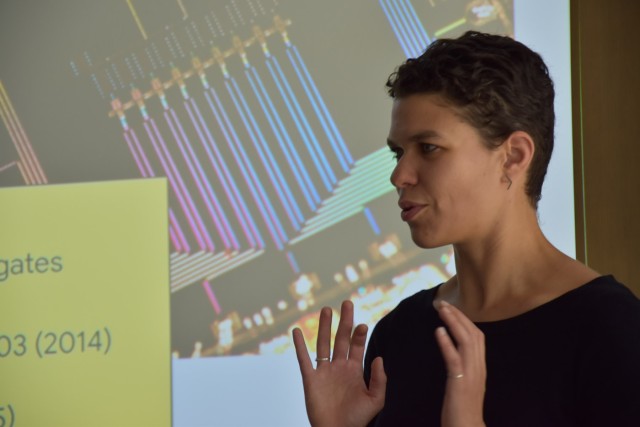 © Mirjam Krieger (MPQ) © Mirjam Krieger (MPQ) |
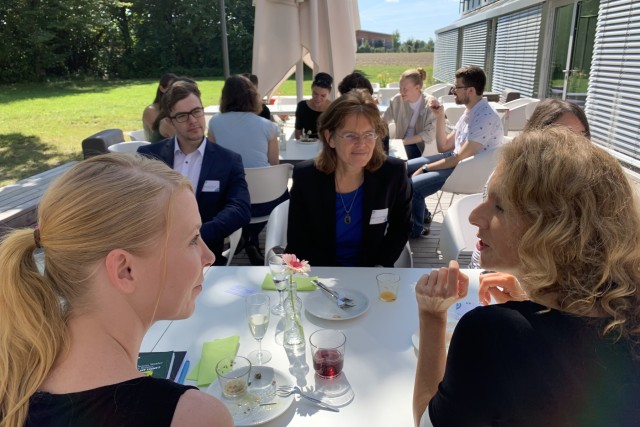 © Mirjam Krieger (MPQ) © Mirjam Krieger (MPQ) |
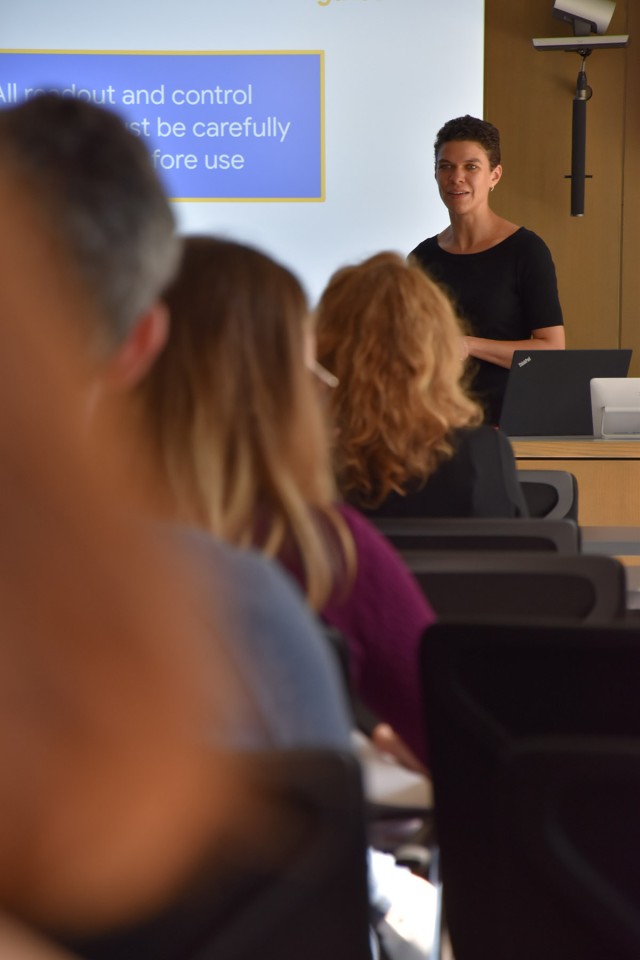 © Mirjam Krieger (MPQ) © Mirjam Krieger (MPQ) |
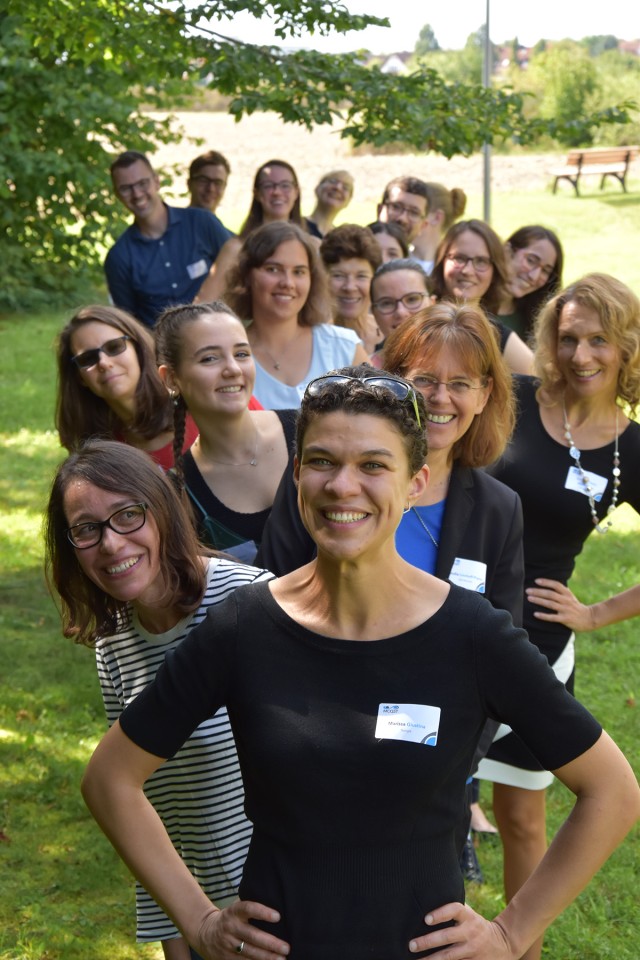 © Mirjam Krieger (MPQ) © Mirjam Krieger (MPQ) |
Visit our
Media Archive page for more photos from the event.